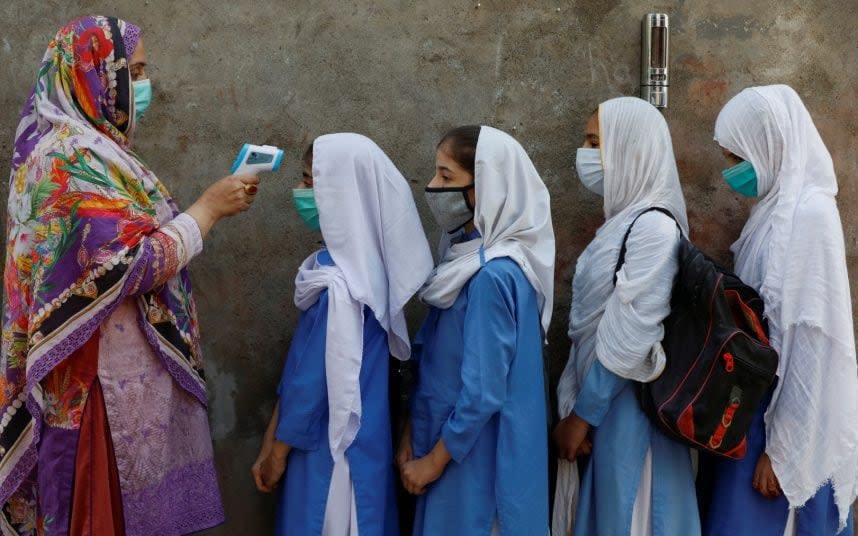Millions of schoolchildren return to classrooms in Pakistan after six months of lockdown


Millions of Pakistani primary schoolchildren are returning to classrooms after six months of lockdown closures, as the country continues to report low case numbers.
This week's opening of junior schools completes a phased return of face-to-face education and means almost all the country's lockdown restrictions have been eased.
Pakistan's low recorded case load and death toll continue to defy earlier predictions and stands in contrast to neighbouring India which is quickly becoming the global epicentre of the disease.
After the country appeared on the verge of a runaway outbreak in mid-June, recorded cases, as well as deaths and the numbers needing hospital treatment have all fallen. The number of tests coming back positive has also dropped and remained low.
“Today, Pakistan’s response is cited among the success stories in controlling and responding to the pandemic,” Imran Khan, Pakistan's prime minister, boasted to the United Nations last week.
A young population, where some only four per cent are over 65, compared to 23 per cent in Italy may have helped explain how the country fared better than Europe and America.
Pakistanis also have low rates of obesity. There has been speculation that immune systems have also been somehow been boosted by background levels of diseases like dengue or polio and immunisations.

Yet any differences between India and Pakistan are more difficult to explain. Pakistan is currently recording hundreds of cases per day compared to India recording more than 80,000 daily.
Not everyone is convinced the differences are real.
Dr Bharat Pankhania, an expert on communicable disease control at the University of Exeter Medical School, said the countries were so similar he would be “very surprised” if Pakistan had fared better.
Many believe any differences can be explained by the relative lack of testing in Pakistan. India carries out four times as many tests per head.
The proportion of tests coming back positive in Pakistan continues to be low however, hovering around two per cent down from 20 per cent in June. While international health officials assisting Pakistan were at first sceptical of the country's falling figures, they now believe they are genuine.
Nationwide occupancy in Covid wards was more than 30 per cent in June and far higher than that in some cities.
Tedros Adhanom Ghebreyesus, director general of the World Health Organisation, this week praised Pakistan's use of workers from its polio campaign to spot and trace Covid-19 cases.
“This has suppressed the virus so that, as the country stabilises, the economy is also now picking up once again. Reinforcing the lesson that the choice is not between controlling the virus or saving the economy; the two go hand-in-hand,” he said.
Pakistan may also have had some demographic cards in its hand when compared with India. Though still the world's sixth most populous nations, the country is far less densely inhabited than India.
Protect yourself and your family by learning more about Global Health Security


